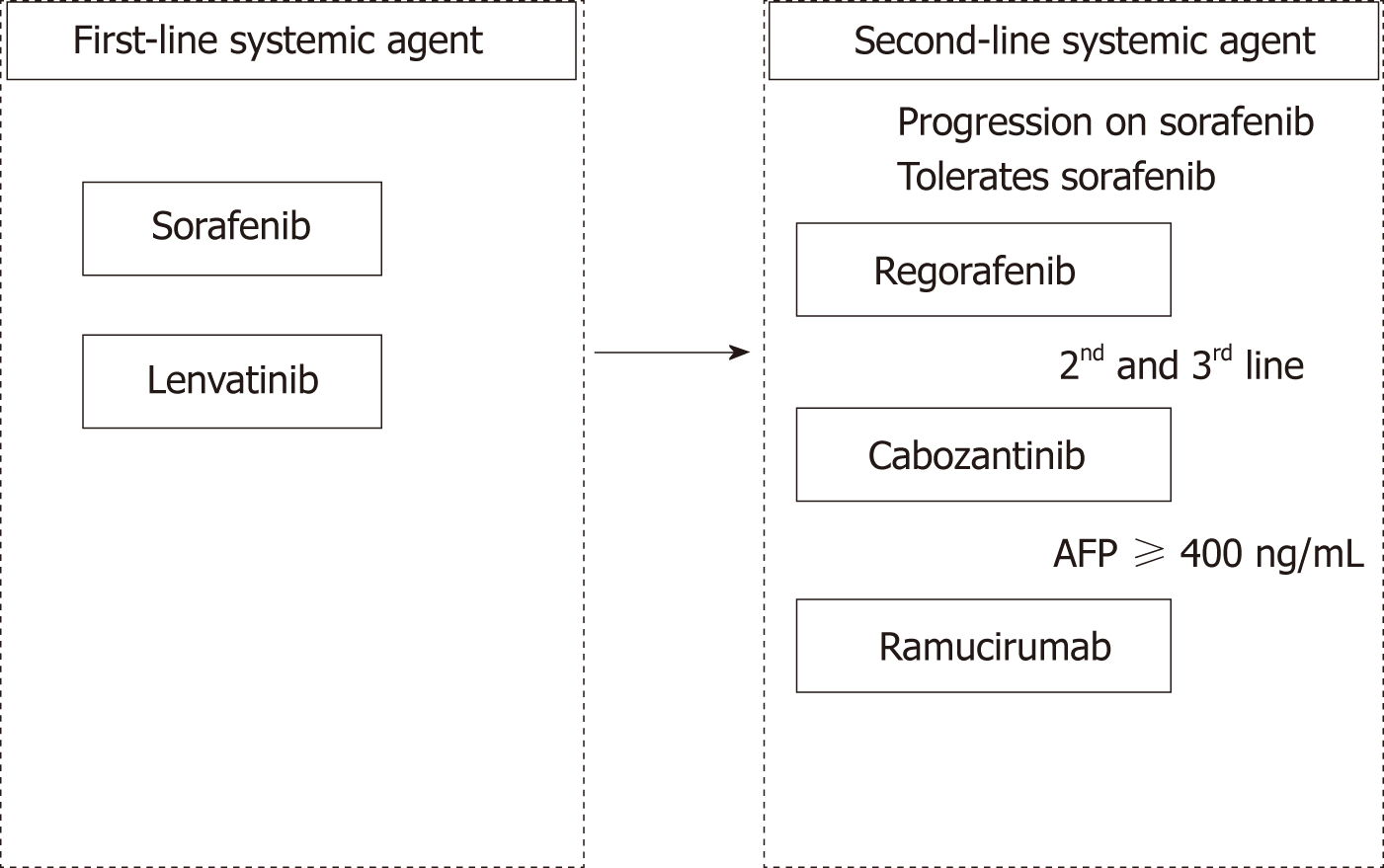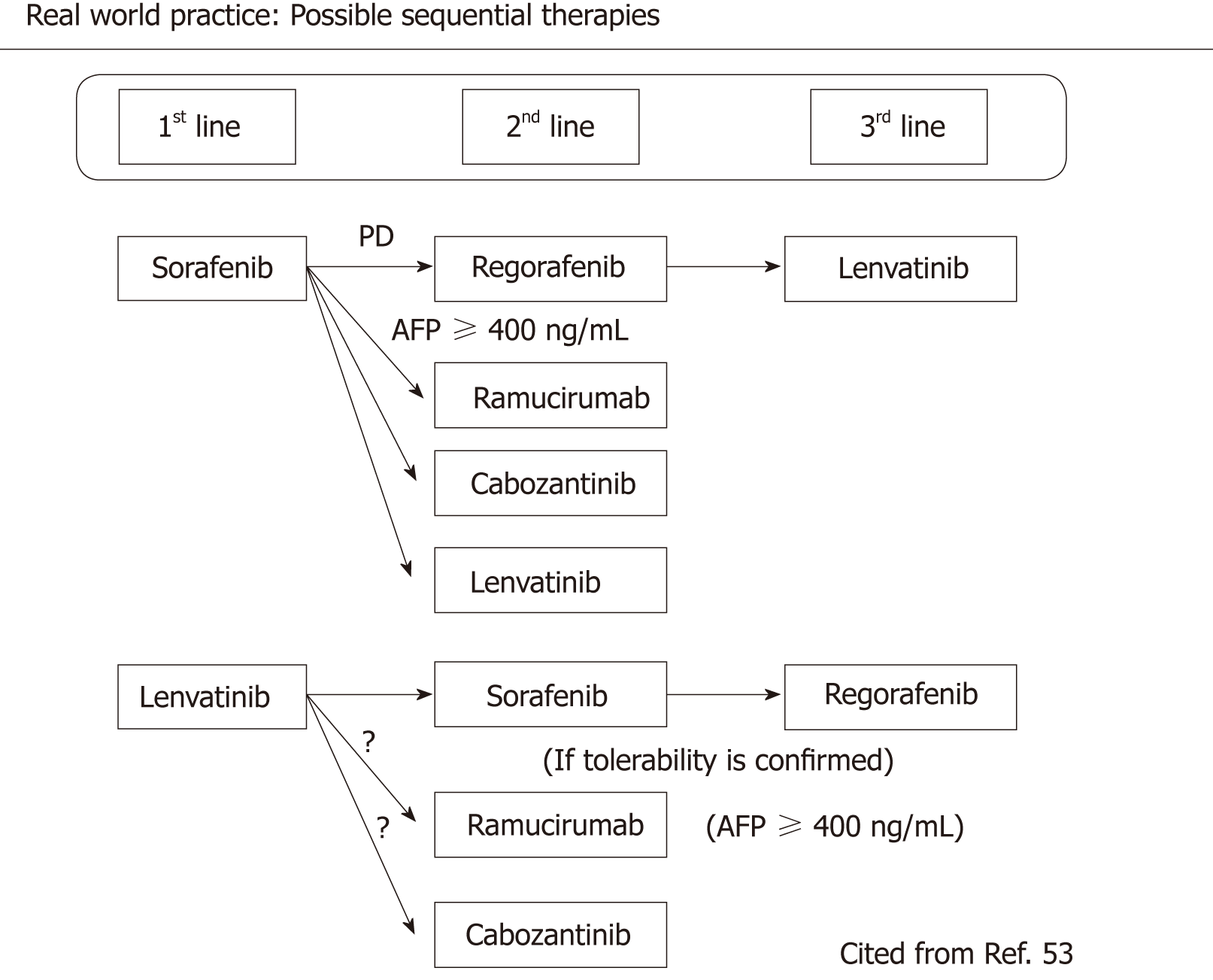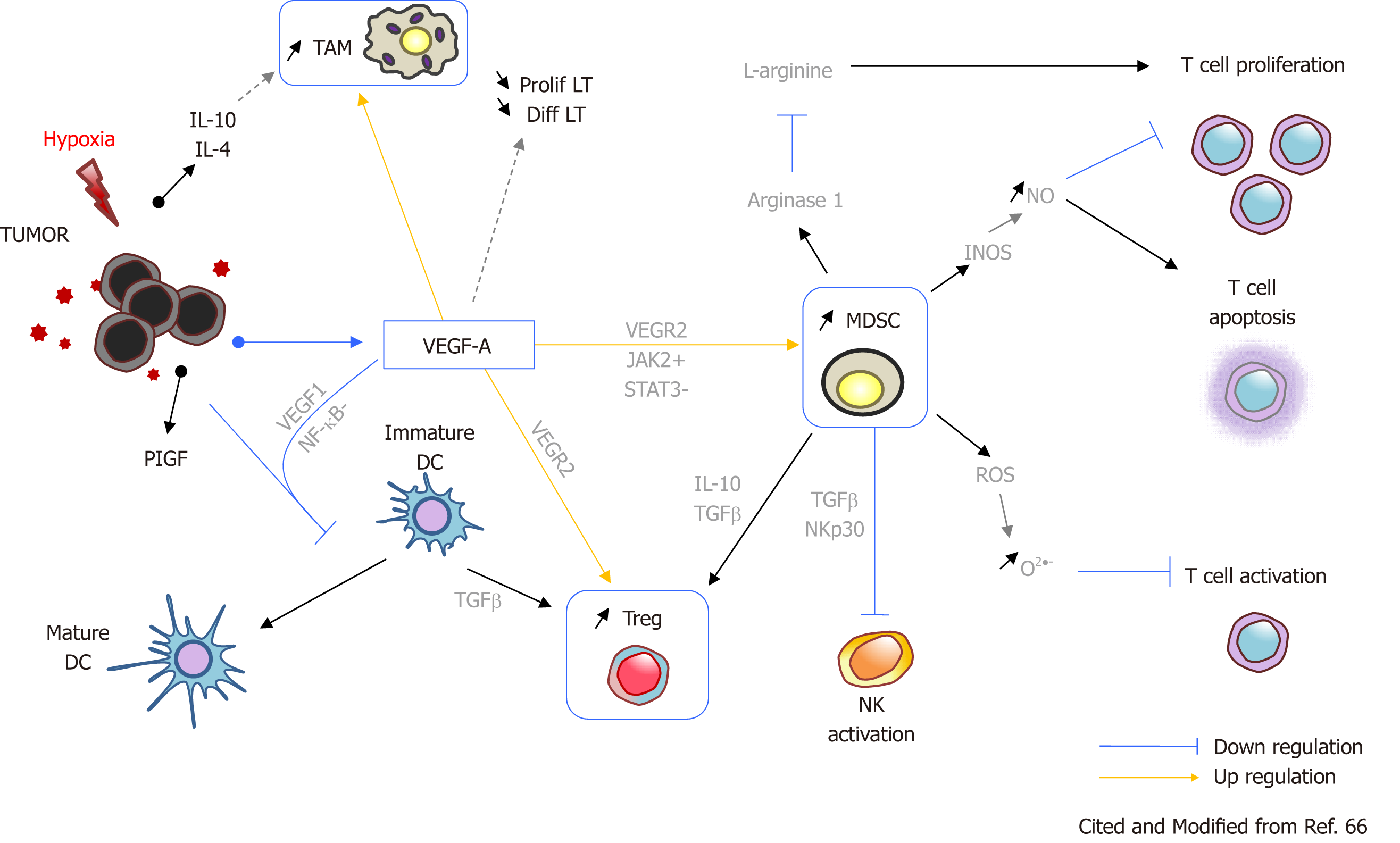Copyright
©The Author(s) 2019.
World J Gastroenterol. Feb 21, 2019; 25(7): 789-807
Published online Feb 21, 2019. doi: 10.3748/wjg.v25.i7.789
Published online Feb 21, 2019. doi: 10.3748/wjg.v25.i7.789
Figure 1 Systemic therapy in hepatocellular carcinoma: 2018 and beyond[53].
Two first-line systemic agents, sorafenib and lenvatinib, are approved and can be used in the clinical practice. Second-line agent, regorafenib is approved for clinical use for progressors on sorafenib. Cabozantinib and ramucirumab will be approved in 2019. AFP: Alpha fetal protein.
Figure 2 Possible sequential therapies of molecular targeted agents for hepatocellular carcinoma in the real-world practice[53].
There are solid evidence for use of regorafenib, ramucirumab, cabozantinib after sorafenib as confirmed by RESORCE, REACH-2 and CERESTIAL trials. However, lenvatinib has been proven to be effective after sorafenib or regorafenib in the real world practice as a second-line or third-line agent. Effectiveness of second-line agents after lenvatinib failure should be explored in the real-world practice setting. AFP: Alphafeto protein.
Figure 3 Tumor Immuno suppressive microenvironment caused by vascular endothelial growth factor produced by tumor[66].
VEGF-A up-regulates tumor-associated macrophage, regulatory T-cell, and myeloid-derived suppressor cell, which cause immune suppressive microenvironment through the down-regulation of the dendritic cell maturation, NK activation, T cell activation and T cell proliferation. VEGF-A: Vascular endothelial growth factor A; MDSC: Myeloid-derived suppressor cell; DC: Dendritic cell; TAM: Tumor-associated macrophage; Treg: Regulatory T cell; IL: Interleukin.
Figure 4 Mechanism underlying the synergistic effect of combination therapy on hepatocellular carcinoma with lenvatinib and anti-PD-1/PD-L1 antibodies[68].
Lenvatinib inhibits tumor angiogenesis and growth through VEGFR1-R3 and FGFR1-R4 inhibition. Lenvatinib also inhibits VEGF-mediated tumor suppressive microenvironment, such as immunosuppressive cells (tumor associated macrophage, regulatory T cells and myeloid-derived suppressor T cells) or tumor suppressive cytokines (IL10 or TGF-β). Lenvatinib also suppress the co-inhibitory checkpoint inhibitor, TIM 3 and increase the co-stimulatory molecules, CD137, OX40 or ICOS. Finally, PD-1/PD-L1 Ab restores the exhausted T cell activity to kill the cancer cell. Therefore, synergistic effect is obtained by this combination.
Figure 5 Improved Overall Survival after combination therapy with molecular targeted agents and immune checkpoint inhibitors[70].
Molecular targeted agents improve survival compared with chemotherapy by cytotoxic agents, but will become resistant sooner or later. Durable long-lasting response is obtained by immune checkpoint inhibitors, but only small portion of patients (15%-20%). Durable long-lasting response will be expected by a combination therapy with molecular targeted agents and immune checkpoint inhibitors in the majority of the patients (50%-70%) with advanced hepatocellular carcinoma.
- Citation: Kudo M. Targeted and immune therapies for hepatocellular carcinoma: Predictions for 2019 and beyond. World J Gastroenterol 2019; 25(7): 789-807
- URL: https://www.wjgnet.com/1007-9327/full/v25/i7/789.htm
- DOI: https://dx.doi.org/10.3748/wjg.v25.i7.789













